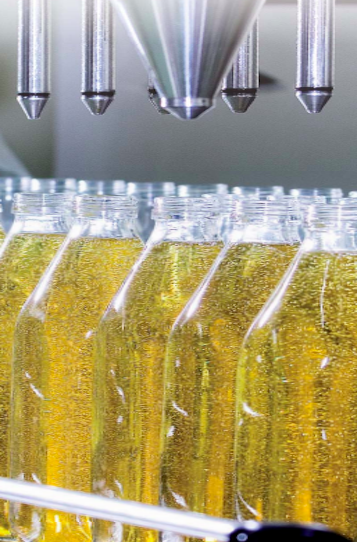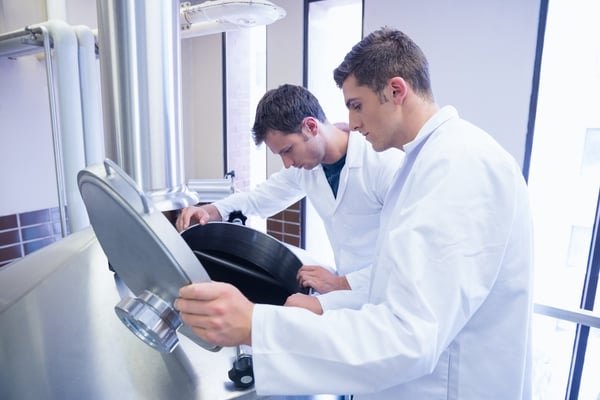
The food industry sector, constantly growing and developing both nationally and internationally, is among the most demanding and difficult to meet due to the stringent regulations, the high quality standards and the safety of the products offered to the consumer. Food processing companies must manage a range of food materials that travel at varying speeds through extreme temperatures, liquid dips, steam treatments, cutting techniques and a multitude of other processing methods. This is why equipment must be state of the art and must not produce potentially contaminating environmental factors, including excess dust, dirt, chemicals and grease. The components must therefore be able to resist the processing methods of food and structure environments without suffering irreparable damage or corrosion, which could cause food contamination.
THE CHALLENGES OF THE SECTOR FOR OEMS
Food and beverage processing equipment offers great challenges for OEMs and machine components manufacturers, they must always be perfect, as downtimes can cost food factories 5 to 20 percent of annual revenue. No food manufacturer wants to expose customers or employees to insane or dangerous situations due to outdated technologies or unsafe machinery, so they turn to OEMs that guarantee quality standards and certifications of their products.
The food industry must comply with strict hygiene requirements and this is mandatory for all components of production, including gearboxes. The industrial system must be as sterile as possible, the equipment and components must be able to withstand high pressure and high temperature chemical solutions. Furthermore, all the strict cleaning procedures to which they are subjected must not compromise the gearboxes, otherwise there is a risk of contaminating the product. The requirements vary according to country and location in food processing, but the most important factors are the choice of materials, aseptic conditions and lubricant.
Gearboxes are used in the main machines to produce, cook, process, handle and package food, as well as those for bottling beverages. Each of these sectors requires customized industrial tools, and each function has a real model of reference and distinction.
Varvel has the possibility to supply most of these sectors with its own range of products with ATEX certification, (where the control of the operating temperature of the gearboxes becomes a distinctive and indispensable factor) and with other special products that can guarantee a hygienic protection, explosion-proof and enhanced, developed to be reliable and long-lasting. In addition, most of the Varvel product range is guaranteed sealed and lubricated for life, thanks to a technology that prevents leaks and excludes the need for new lubrications.

REGULATIONS FOR LUBRICANTS
Respecting FDA (Food and Drug Administration) regulations while providing highly efficient production is the goal of every food processing plant. The FDA regulation considers both the cases in which the lubricants come into contact with gaskets and those in which they are used on parts of the machine directly exposed to contact with food (this is the case of conveyor belts). The standards regulate in particular the level of residues granted depending on the type of material and area of use, for example, the residues of lubricant allowed on metal components. Other materials considered and regulated are mineral oils, which may or may not be used as lubricants and the membranes used in the packaging processes, which must guarantee high hygiene standards.
Thanks to the Food Contact Notification Program, a program for the notification and regulation of the new FCS, between 2000 and 2009 analyzed a total of 924 substances (of which 76% were accepted).
To protect these rules, a number of certification bodies come into play, including NSF International, which is part of the Public Health and Safety Organization, and the USDA, Agriculture Department of Agriculture, the Department of Agriculture US. Both have specific programs for the food sector, and set standards of reference

The American NSF has developed a well accepted and approved standard for the classification of lubricating oils (with classes from H1 to H3), but an ISO certification has also been added.
The application of the class depends on the extent to which the products can come into contact with food. The classification starts with H1, the highest score, and goes to H3.
1) H1 lubricants can be used in applications where limited contact with food is possible. They are made from ingredients from a list of approved components prepared by the American FDA.
2) H2 lubricants can be used in the food processing industry, but not in contact with the food product. In this case there is no list of ingredients, but there are many restrictions on toxicology and heavy metals.
The H1 lubricants are slightly more expensive at the purchase price, but have the advantage that, unlike standard lubricants, they are not part of the HACCP procedure (set of procedures, aimed at ensuring the healthiness of food, based on prevention rather than analysis of the finished product), and provide peace of mind regarding food safety, and in the long run are also cheaper because they allow not to repeat any time-consuming procedure.


